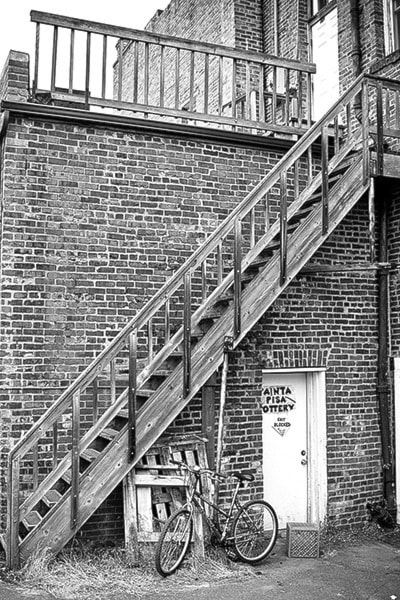Last week I wrote about black and white photography. From the comments I received I realized there are many other photographers out there very interested in enjoying the process of making black and white images.
While driving my noisy, old diesel truck (with my car awaiting a replacement engine) I got to thinking about what it was like when I used black and white film.
The drive was along a winding, valley road that we are so familiar with in British Columbia, however, they are being phased out, unfortunately. And although I attempted to listen to the radio, the static caused by the power lines running along the roads edge, the loud diesel engine and, of course, the worn out radio, left me to my own thoughts, and soon I was contemplating about film and shooting with black and white film.
Formerly, once the shutter was released on a camera loaded with film what one got was, well, what one got was what one got.
There were no second chances as enjoyed today. One was left with only a memory of that moment in time until the film was processed and printed.
A friend remarked that photographers had to be better in those film days than they are today. I think that’s a nice, egotistical thought to comfort aging picture takers, but I don’t think its true. And in my not so humble opinion, I am going to say that modern photography is just different, evolving and different. Even in the days when film ruled there was a difference between those that filled their cameras with colour film and those, like me, that preferred black and white film.
I began using black and white film because that’s what my first college class recommended, then after a time I began to understand the medium and grew to like B&W.
We used a term called “previsualization”. Previsualization is attributed to Minor White. While studying the subject a photographer predetermines how the final image would be processed and printed. Ansel Adams referred to that process as “the ability to anticipate a finished image before making the exposure”.
There was also the Zone System. American photographers Fred Archer and Ansel Adams collaborated on the technique for determining optimal film exposure and development that provided photographers with a method to precisely define the relationship between the way they visualized the photographic subject and the final results.
Those techniques were, at least in the way I applied them, to formulate or determine how I wanted the final print to look. Colour film had creative limitations and had to be printed in an almost lightless room, whereas my personal lab for printing B&W was quite bright because photographic paper is only sensitive to white light, not yellow, orange, or red. And that allowed me to see the image and control how it would look.
With B&W film I learned to previsualize, and as I selected my subject I would think about how I would process the film and make the final print. I could alter the exposure rating, as with the Zone system, depending on which chemicals I planned on using and how long I would keep the film in the developer. I would select different papers and alternate chemicals to change contrast or tonal values in the final print.
Shooting with black and white film and managing the process of developing and printing the picture taught me that the camera and film (now the sensor) are just the starting point to making a photograph match my personal vision, and my personal vision is much more important than the camera’s.
Shooting black and white taught me to watch for tonal shifts from black, to mid grey, and finally, to white with detail. Studying how it would look became an intellectual process rather than an emotional one.
B&W photography is a matter for the eye of the beholder, the intuition, and finally the intellect. Of course colour is all that, but much of the time it seems photographers, overwhelmed by colour, just push the shutter seeing nothing deeper in a scene than the colours.
Black and white images, because they don’t attract with a play of colours, seem subtle and make me think about the tonal range and demand my close attention to composition, lighting, perspective, and the context the image is shot in as important factors.
I learned about photography by shooting with black and white film. I don’t use film anymore, and the photographic examples I have included are digital. When I am thinking in black and white, I slow down and that stretches me to creatively see, and show, the world differently.
These are my thoughts this week. Contact me at www.enmanscamera.com or emcam@telus.net. Stop by Enman’s Camera at 423 Tranquille Road in Kamloops. And if you want an experienced photographer please call me at 250-371-3069. I also sell an interesting selection of used photographic equipment.
